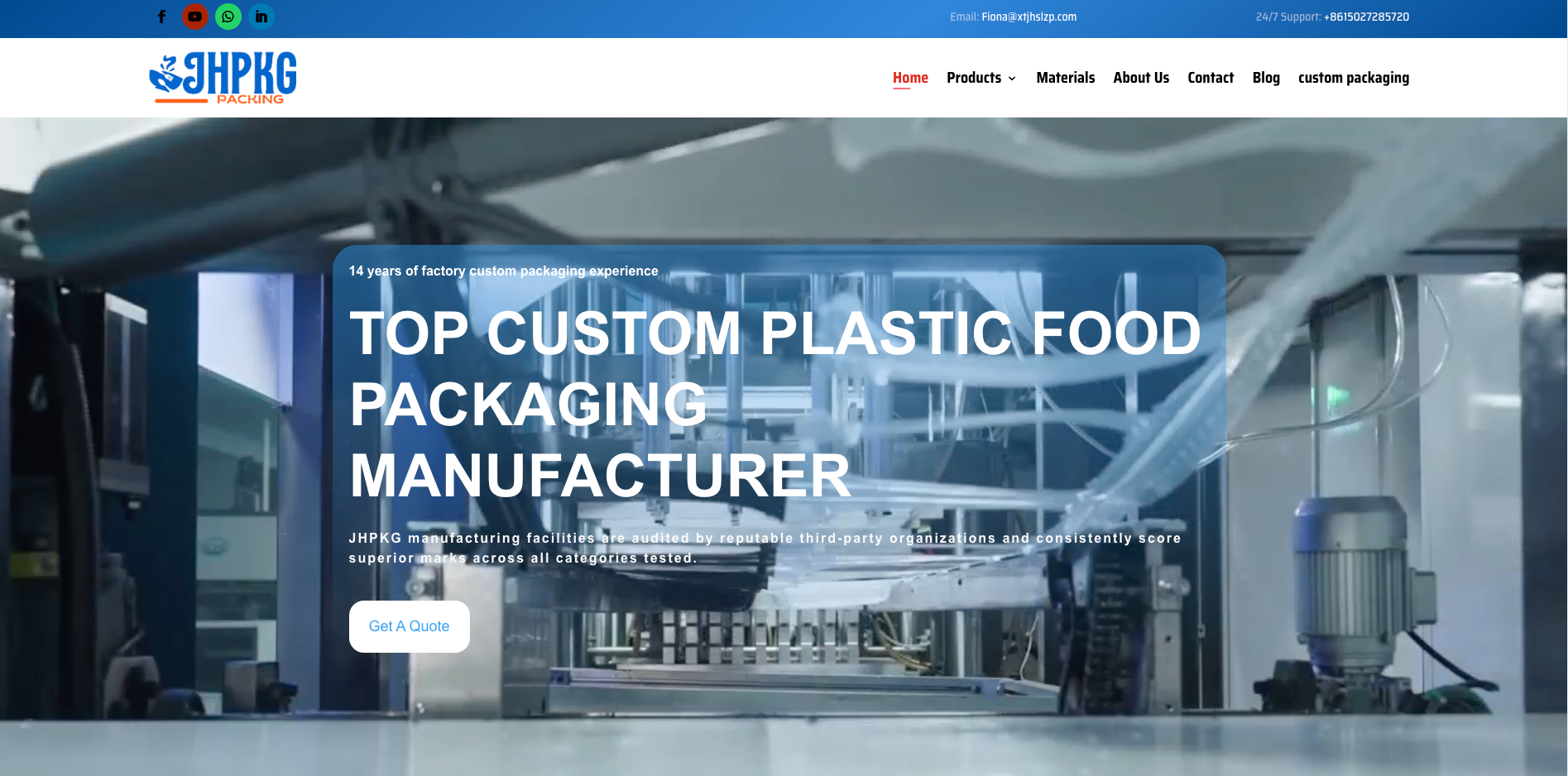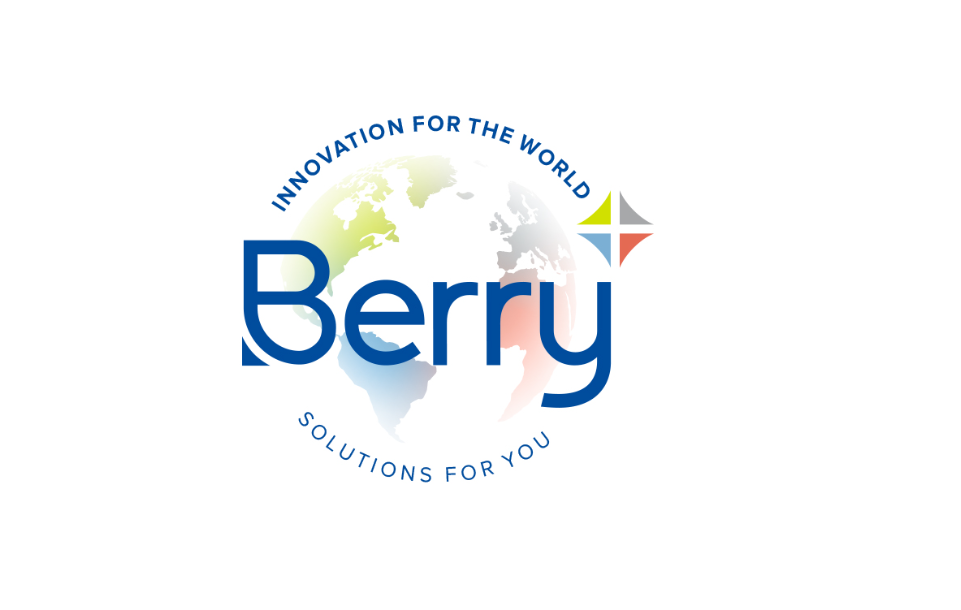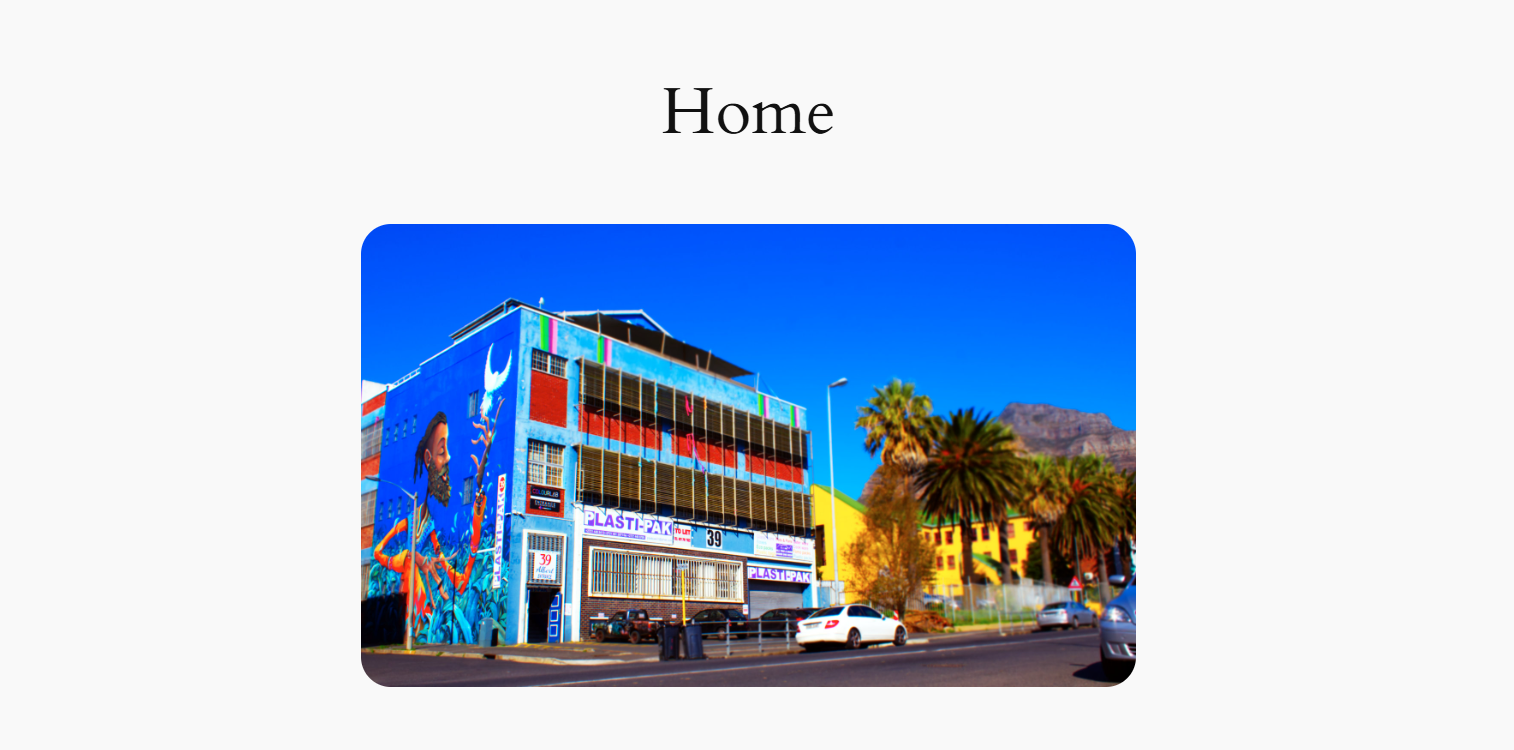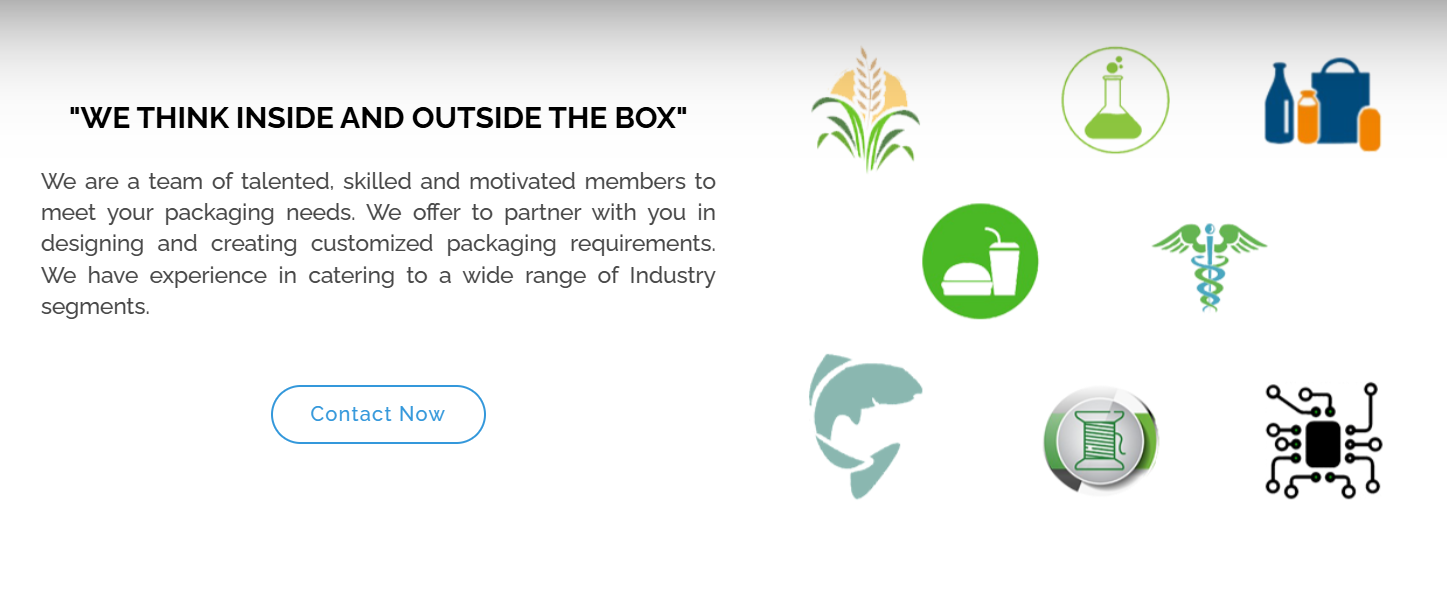When placing bulk orders for frozen plastic food packaging, there are several food packaging suppliers that stand out to me. These suppliers keep their promises. They offer reliable service, excellent quality, and affordable prices. In my experience, these food packaging suppliers focus on creating packaging that is both durable and efficient. It ensures that your frozen food stays fresh and safe during transportation. It’s like adding an extra layer of protection around the food, keeping it in perfect condition until it’s time to enjoy it.
Browse the Best Frozen Food Packaging Suppliers
JHPKG
JHPKG is a leading provider of high-quality plastic food packaging manufacturer with over 14 years of growth. I admire how they’ve evolved from a small start-up to a key player in the industry. They offer a wide range of products, from blister packs to injection-molded containers and disposable tableware molds, all reflecting their focus on excellence. What stands out to me is their expertise in materials like PP, PET, CPET, MFPP, and PS molding. This ensures their products are both reliable and efficient. Their factory covers 40,000 square meters and operates with over 100 advanced machines, ensuring both high production capacity and top-quality products. When I think of them, I picture a company that seamlessly combines experience and cutting-edge technology to deliver outstanding results.
Sustainability Focus
JHPKG is committed to sustainability. They use eco-friendly materials that meet environmental standards. Their products are recyclable, which helps reduce environmental impact and promotes resource conservation. The company also designs packaging to be stackable, which reduces transportation costs and increases loading capacity.
Certifications and Compliance
JHPKG holds key certifications like ISO13485, FDA, and EU standards. These certifications confirm that their products meet international regulations and quality standards. They’ve also passed ISO9001 environmental management certification. All materials used are FDA, SGS, TUV, and EU quality certified.
Global Reach and Partnerships
JHPKG exports to many countries, including the United States, the United Kingdom, Japan, Australia, and ASEAN regions. They have built strong partnerships with major importers and global retailers such as Walmart, Sam’s Club, and popular restaurant chains. This wide network shows JHPKG’s international presence and strong reputation in the industry.
Customer Service and Quality Control
JHPKG prioritizes customer satisfaction with its “Quality First, Customer First” philosophy. They maintain strict quality control from raw material procurement to the final product, using international inspection standards. A skilled technical support team is always available to offer guidance, ensuring timely delivery and efficiently resolving customer issues.
Amcor
History
Amcor started in 1860 in Australia and has grown into a global leader in packaging. Today, it is part of almost every aspect of our daily lives—whether it’s the food we eat, the drinks we drink, or the healthcare products we depend on. It plays a key role in keeping everything safe, fresh, and ready for use.
Specialization
Amcor is renowned for its high-performance packaging solutions. They offer flexible and rigid packaging products designed to protect frozen food, extend shelf life, and improve consumer convenience. They are also committed to sustainability, with a focus on recyclable and reusable packaging materials.
Sealed Air
History
Established in 1960, Sealed Air is a U.S.-based company that initially gained fame for inventing bubble wrap. Over the years, Sealed Air expanded into food packaging and hygiene solutions.
Specialization
Sealed Air specializes in food packaging that enhances food preservation and reduces environmental impact. Their packaging solutions for frozen foods include films, trays, and other materials that help extend the shelf life of frozen products, reduce waste, and ensure product integrity during storage and transportation.
Berry Global
History
Berry Global was founded in 1967 in Evansville, Indiana. It is a leading supplier of plastic packaging products, serving industries like food and beverage, healthcare, and consumer goods.
Specialization
Berry Global focuses on creating packaging solutions that are both sustainable and functional. Their expertise in thermoforming and injection molding allows them to provide innovative packaging for frozen foods, including trays, containers, and films that preserve freshness and provide ease of use for consumers.
Winpak
History
Established in 1977 in Canada, Winpak has grown into a global leader in packaging solutions for food and beverages. The company focuses on providing high-quality, innovative packaging options for a variety of industries.
Specialization
Winpak is particularly known for its expertise in flexible packaging solutions for frozen foods. They offer products like thermoformed trays, vacuum-sealed bags, and other innovative materials that provide excellent moisture and temperature protection, ensuring the quality and safety of frozen food products.
Plastipak Packaging
 History
History
Founded in 1967, Plastipak Packaging is a global leader in the design and production of plastic packaging solutions. Headquartered in Michigan, USA, the company specializes in a wide range of industries, including food, beverage, and personal care.
Specialization
Plastipak is a major player in providing plastic containers and packaging films for frozen food products. They focus on offering customizable, sustainable solutions that enhance the safety, convenience, and shelf life of frozen foods. Their commitment to innovation includes developing packaging that minimizes waste and promotes recyclability.
Flextrus
History
Flextrus, founded in 1987, is a Swedish company known for its flexible packaging solutions. It started small but has expanded to serve many industries, especially food packaging. I admire how the company integrates innovation into each product. Their packaging adapts to the changing needs of customers worldwide.
Specialization
Flextrus is well-regarded for its flexible packaging solutions, especially for frozen foods. They offer barrier films and other packaging materials designed to protect frozen food from moisture, oxygen, and other environmental factors that can affect quality. Their focus on sustainability and innovation makes them a key supplier in the food packaging industry.
Key Considerations for Choosing a Supplier
it’s important to work with one that has solid industry experience. The best supplier should offer fast turnaround, flexible options, and creative packaging solutions that meet your needs. Based on my experience, suppliers who use automation tend to provide more reliable and consistent results, which helps maintain production efficiency. Material selection is also key. The packaging must withstand extreme temperatures, whether freezing or thawing, without cracking or becoming brittle. For example, when I worked on a frozen food line, we made sure the packaging resisted moisture and contaminants, preserving the product’s quality during freezing and thawing.
I always lean towards features that make life easier—such as easy-to-open designs and resealable bags. I love the simplicity and convenience of packaging that doesn’t require a struggle to open, especially when I’m starving. I will never forget the time I grabbed a microwaveable frozen meal, and the resealable bag was a game-changing design. It not only saved me time, but also made me feel more connected to the brand, turning me into a loyal customer.
For me, the sustainability of packaging is equally important. I like knowing that the packaging I choose is made from plant-based or recyclable materials. This is my small way of reducing waste and making a positive impact. The right packaging can show that a company cares equally about the environment and its customers, which I really appreciate.
In addition, choosing a reliable supplier is crucial. I’ve been burned before and learned that working with suppliers who have a good reputation and solid financial standing is key. It’s their reliability and experience that ensure everything runs smoothly.
I never overlook the testing sample process. I remember the first time I received a frozen food package and wondered if it could withstand the test of the freezer. Through testing, I knew that no matter how low the temperature, the food inside would stay intact. It’s like a protective barrier, ensuring the food stays fresh throughout its shelf life.
Ultimately, I’m always looking for high-quality, customizable, and on-time packaging. After all, it’s these unique details that make the product stand out and keep me coming back for more.
Steps to Custom Frozen Food Packaging
for ordering custom frozen food packaging in bulk, it’s important to take a few key steps to ensure it meets your needs—quality, functionality, and budget. Getting it right can make a big difference. Here’s a simple guide to help you:
1. Identify Your Needs
Think about your product’s size, design, and branding. Consider: – Storage conditions: Make sure the packaging can handle the temperature and moisture of frozen food. – Consumer preferences: Use eco-friendly materials or packaging that is easy to open. – Budget: Set a clear budget to avoid overspending on packaging.
2. Choose the Right Material
The packaging material must handle the cold and keep the food quality intact. Consider: – Cold resistance: The packaging must survive freezing without cracking or losing strength. – Acidity and fat content: Some foods, like acidic or fatty ones, need specific materials.
3. Work with Experienced Manufacturers
Pick suppliers who specialize in frozen food packaging. Look for: – Certifications: Make sure the manufacturer has certifications like Safe Quality Food (SQF) Level 2. – Customer reviews: Check feedback from previous clients to assess their reliability.
4. Design and Branding
Custom packaging should match your brand. Think about: – Visual appeal: Work with designers to create packaging that grabs attention. – Functionality: Features like resealable openings, tear notches, and easy-to-open designs are important for consumer convenience. – Regulatory compliance: Ensure the packaging meets food safety and labeling standards.
5. Customization Options
Make sure the packaging fits your product well: – Size and shape: The packaging should fit your product’s dimensions. – Extra protection: Choose materials that protect against moisture and freezer burn.
6. Test and Prototype
Before mass production, test prototypes in freezing conditions: – Performance testing: Ensure the packaging can endure freezing, storage, transport, and handling without damage. – Prototyping: Try different prototypes and get feedback from a small group to improve the design.
7. Compare Pricing and Lead Times
Look for the best deals: – Volume discounts: Find suppliers that offer discounts for bulk orders. – Flexible lead times: Pick manufacturers with lead times that fit your production schedule, especially if you need fast delivery, such as 15-day lead times for digital printing.
8. Final Customization and Mass Production
Once the prototype is approved: – Finalize the design: Add your logo, product information, and branding elements. – Quality assurance: Make sure the final product meets your quality standards before production starts.





 History
History